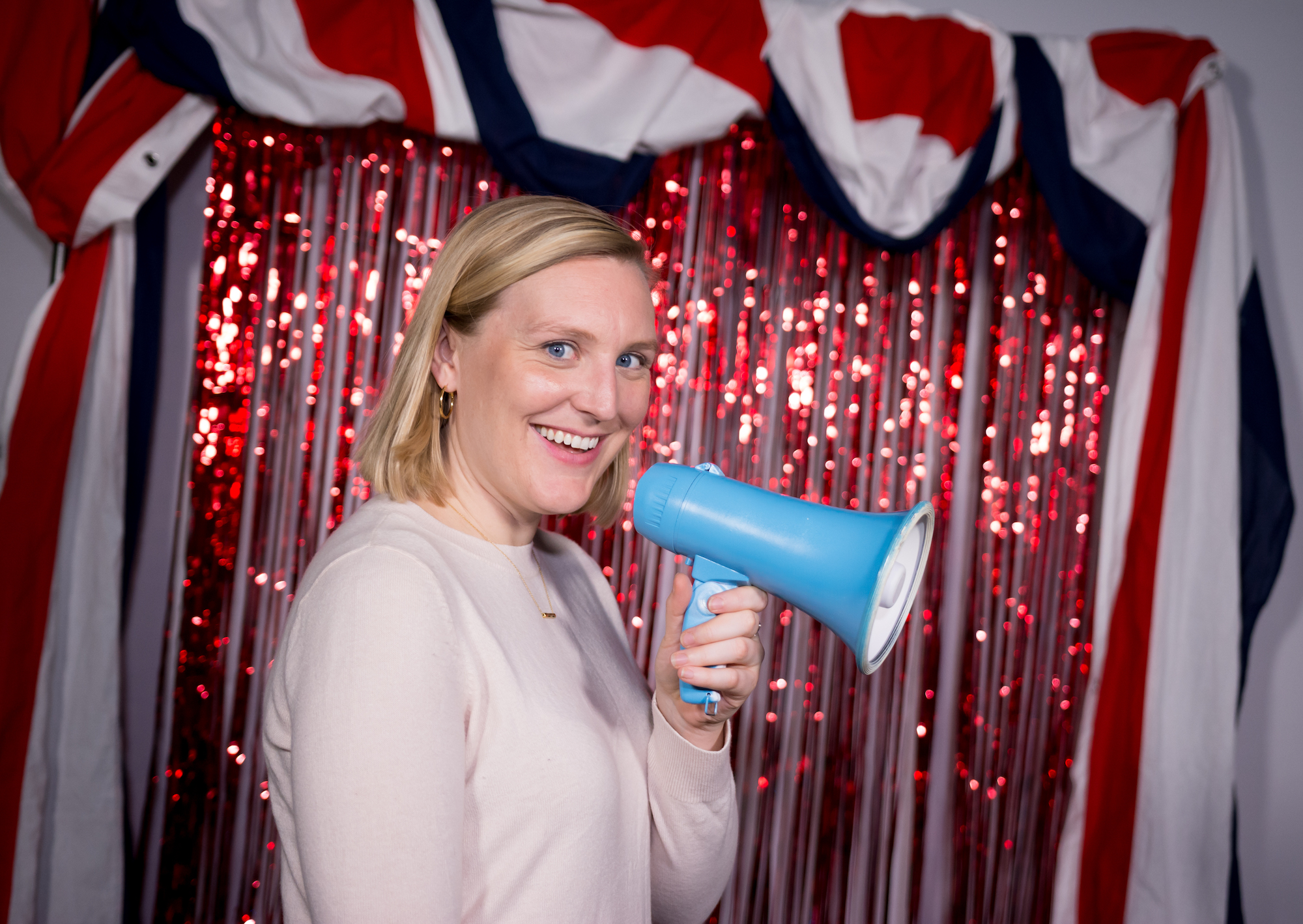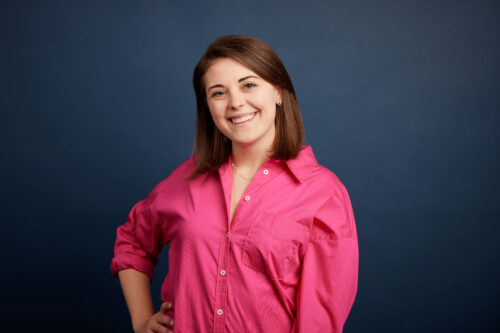Communique Magazine
Mobilizing Voters On and Off-Line
2019-20 Technology and Democracy Fellow Laura Miller on connecting with new voters

On January 1, 2017, Michelle Obama moved out of 1600 Pennsylvania Avenue and became former first lady of the United States. “I think our democracy has it exactly right: two terms, eight years. It’s enough,” she told Vogue magazine.
Two years later, Obama returned to the political stage. But not in the way many had speculated.
In the lead up to the 2018 midterms, Michelle Obama launched When We All Vote, a nonpartisan organization dedicated to encouraging voter participation, particularly among young people. “It’s time. Our nation requires it,” she passionately intoned in the initiative’s launch video. “Our democracy in the country we love requires our attention, voice, and participation.”
Obama’s words struck a chord with Laura Miller a 2019–2020 Technology and Democracy Fellow at the Ash Center. Miller, a digital communications expert who served as director of Online Engagement in the Obama White House, signed on to help build When We All Vote as its digital director, later becoming mobilization director.
“I wanted to be a part of When We All Vote because I believe voting is actually bigger than any one issue, any one candidate, or any one party,” says Miller. “It’s about all of us. And when more people participate, we’re stronger as a country.”
While When We All Vote harnesses the star power of the former first lady and co-chairs like Selena Gomez, Chris Paul, and Tom Hanks to create buzz around the importance of voter participation, the organization has also worked hard to generate more personal narratives around voting. “We know that people trust their family and friends the most,” says Miller, so When We All Vote strives to empower individuals to talk to those they already have relationships with. “At the end of the day, a conversation you have with a person in your life is more impactful than any celebrity,” Miller notes. “Even Michelle Obama.”
In 2018, When We All Vote organized volunteers to host 2,500 local voter registration events across the country, engaged 200 million Americans online, and texted resources to register and get out to vote to nearly four million voters. Now, preparing for the 2020 elections, the organization has launched two new programs: Voting Squads and My School Votes.
For each program, When We All Vote recruits volunteers from across the country to build and lead local teams to register voters. My School Votes teams are often led by students or teachers. The organization provides squads and school groups with tools, training, and resources, like themed voter registration toolkits and lesson plans around voting and civic engagement.
“A lot of what we do is online,” says Miller. “We’re building online communities, but we’re also partnering with local organizations on the ground.” It is this seamless connection of offline and online activity that allows volunteers to act local but feel connected to the larger movement.
“Digital engagement and mobilization have been a part of political and advocacy strategy for the past few years but not everyone is able to translate online activity into real-world change,” says Teresa Acuña, Associate Director of the Ash Center’s Democracy Program. “We were excited to have Laura Miller as a 2019–20 Technology and Democracy Fellow because she has an impressive track record of leveraging digital communications to create authentic connections and on-the-ground action.”
For Miller, the Technology and Democracy program—a fellowship for emerging leaders using digital tools to help strengthen our democracy—has allowed her to step back from her work and reflect. “It’s something that allows me to take what I’m doing to the next level,” she says.
As a part of her fellowship, Miller is working with students, including members of the Harvard Votes Challenge team, to further hone their digital chops. In October, Miller led a hands-on, skills-building workshop at Harvard Kennedy School on Mobilization 101. She taught students what she calls the “ladder of engagement,” a metaphor for strategizing the steps to take an online audience from passive observers to active participants in our democracy.
Working with markers and large sheets of paper stuck to the walls and tables, Miller advised students as they developed an issue-based campaign of their own and described the steps someone would take to become an advocate for change. Ideas started to come off the page for some students as they began making plans, even starting to record videos on the spot.
“Laura’s presentation deepened the way I think about digital engagement, showing its importance both as a way to build on the impact of individual organizing actions and as a way to make campaigns more accessible, personal, and inclusive,” reflected Chris Cantwell Harvard College 2022, who participated in the workshop. “Digital organizing is not only useful for broadcasting messages out but is a powerful way to bring more voices into the conversation to make organizing efforts stronger.”
The lessons from Miller’s workshop will become a part of a larger project in which she is developing a new plan for sharing how best to build a relational volunteer program for voter registration and engage with potential voters on- and offline. As part of her fellowship, she is building a new playbook that details some of the best practices she has seen from other groups, like March for Our Lives, who have embedded voter registration into their issue activism. These tools and methods can be used to not only register voters but, she hopes, develop a broader culture of voting that increases our perennially meager voter turnout levels.
“As we move into 2020, it’s not only about registering as many voters as possible but, more importantly, it’s about creating deep, lasting change by shifting the cultural narrative around voting and bringing new voters into the democratic process,” says Miller.
